This is my visit to the city of Sucre, Bolivia. First, I toured the historic center and then visited the local market. I walked slowly throughout the entire tour, taking thousands of photos. The temperature was very pleasant, since my visit was in the month of April. Here, in the southern hemisphere, it is autumn, but at these latitudes the weather is very pleasant. Sucre was founded in the 16th century and, although it had other names at the beginning, today it is known as Sucre and is one of the most beautiful cities in Bolivia. I began my day exploring the streets, appreciating the colonial architecture that tells stories of centuries past. Every corner offers an impressive view, with churches, museums and squares that reflect the rich history of the city. The streets are always full of life, with many people going about their daily routine and numerous vehicles traveling along its avenues. Everything seemed incredibly photogenic to me, from the buildings to a peculiar traffic light decorated in a very particular way.
Esta es mi visita a la ciudad de Sucre, Bolivia. Primero, recorrí el casco histórico y luego visité el mercado local. Todo el recorrido lo hice caminando pausadamente, mientras tomaba miles de fotos. La temperatura era muy agradable, ya que mi visita fue en el mes de abril. Aquí, en el hemisferio sur, es otoño, pero a esas latitudes el clima es muy placentero. Sucre fue fundada en el siglo XVI y, aunque al principio tuvo otros nombres, hoy es conocida como Sucre y es una de las ciudades más hermosas de Bolivia. Comencé mi día explorando las calles, apreciando la arquitectura colonial que cuenta historias de siglos pasados. Cada esquina ofrece una vista impresionante, con iglesias, museos y plazas que reflejan la rica historia de la ciudad. Las calles están siempre llenas de vida, con mucha gente llevando a cabo su rutina diaria y numerosos vehículos que transitan por sus avenidas. Todo me resultaba increíblemente fotogénico, desde las edificaciones hasta un peculiar semáforo decorado de manera muy particular.
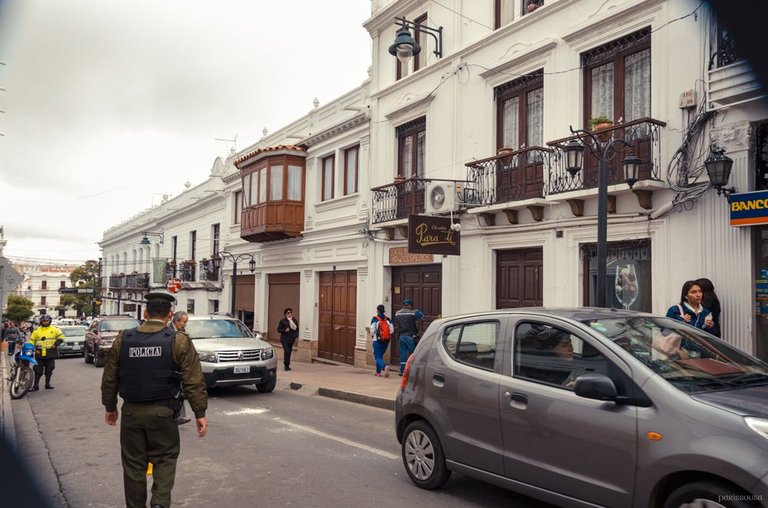
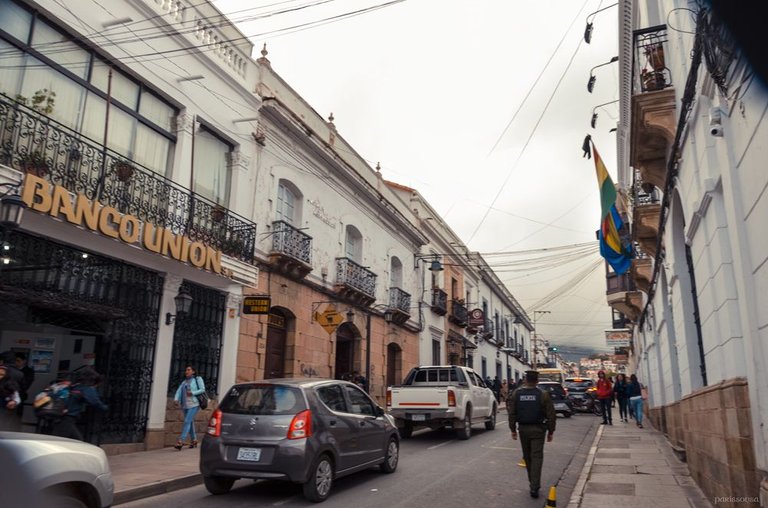
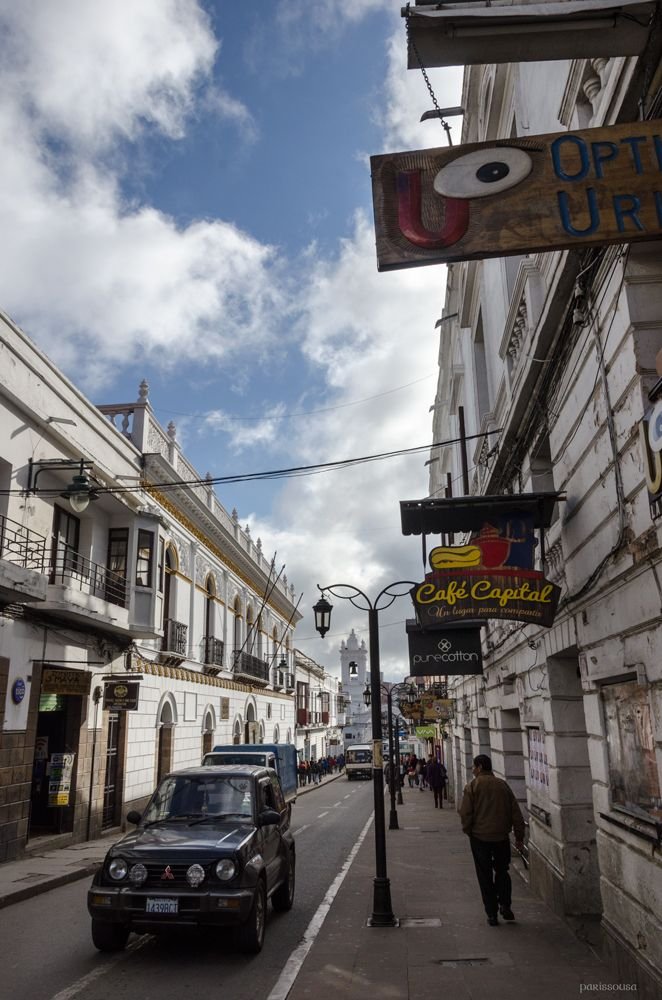
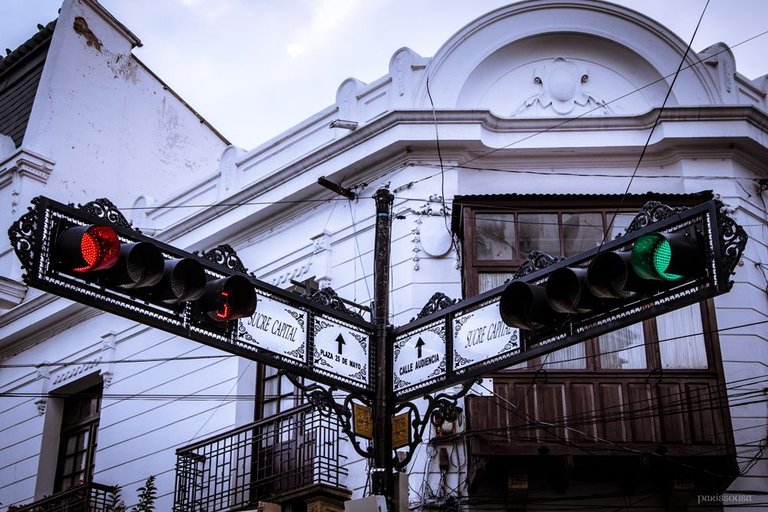
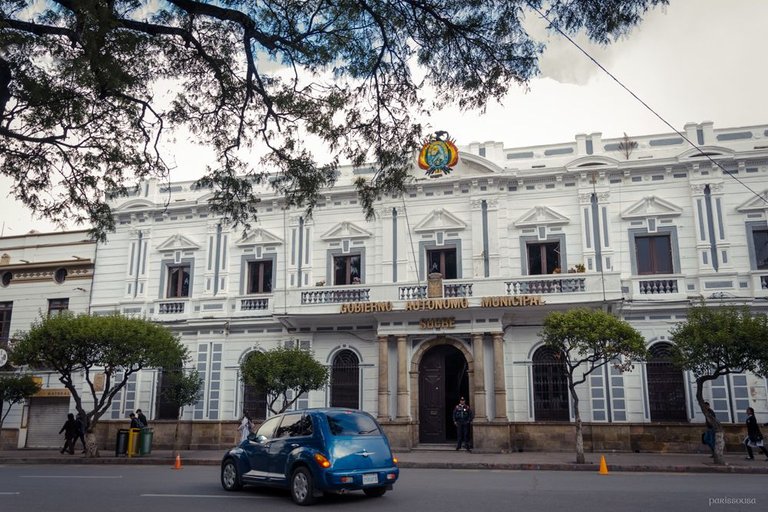
Walking, I came to the Basilica of San Francisco de Charcas. I read that it belongs to the Franciscan order and was built between 1539 and 1581. Its style is colonial baroque and it is painted white, a representative color of Latin American colonial architecture. Something that caught my attention was the great visual pollution; endless bundles of cables cross the sky. I decided to take a photo including the cables, since, although other photographers would probably try to avoid them, I was interested in including them as an integral part of the city.
Caminando, llegué hasta la Basílica de San Francisco de Charcas. Leí que pertenece a la orden franciscana y que fue construida entre 1539 y 1581. Su estilo es barroco colonial y está pintada de blanco, un color representativo de la arquitectura colonial latinoamericana. Algo que me llamó la atención fue la gran contaminación visual; manojos interminables de cables surcan el cielo. Decidí tomar una foto incluyendo los cables, ya que, aunque otros fotógrafos posiblemente tratarían de evitarlos, me interesó incluirlos como parte integral de la ciudad.
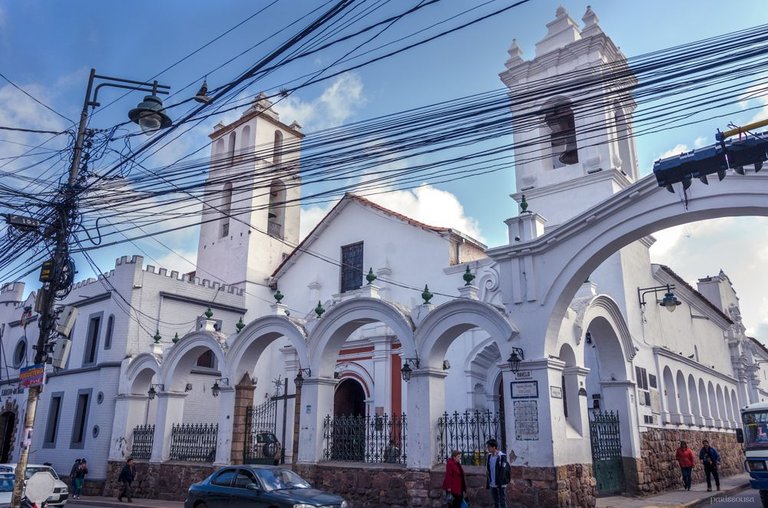
Mingling with the crowd, I continued to walk around the city and take photos. I captured not only images of people, but also of the mannequins in the shops. I am fascinated by mannequins; they are like silent, motionless witnesses. I also saw dogs roaming the sidewalks and sleeping in the sun in the middle of the street, something very typical of Latin America. I am not sure if they are abandoned, homeless dogs or if they are accompanied by their guardians and walking together.
It is also very interesting and, for us, strange to see women in their traditional clothes. They are called "cholas." According to the definition, it refers to women who wear the traditional clothing established during the initial process of mestizaje in the current Bolivian territory. A few years ago, the term was used with a pejorative connotation, but that has been left aside today and it is no longer used with a racist connotation. In addition to this way of dressing, they have a typical hairstyle: they wear their hair in two braids tied and arranged on their backs. But the most interesting thing is how these traditional clothes coexist with modern clothing; so we can see a woman in traditional attire next to another in modern clothes, each with her own style.
Mezclándome entre la gente, seguí recorriendo la ciudad y tomando fotos. No solo capturaba imágenes de las personas, sino también de los maniquíes en las tiendas. Me fascinan los maniquíes; son como testigos mudos e inmóviles. Además, vi perros recorriendo las veredas y durmiendo al sol en plena calle, algo muy típico de Latinoamérica. No estoy segura si son perros abandonados, sin hogar o si están acompañados por sus tutores y pasean juntos.
También es muy interesante y, para nosotros, extraño ver a las mujeres con sus ropas tradicionales. Se las llama "cholas". Según la definición, se refiere a las mujeres que utilizan las vestimentas tradicionales establecidas durante el proceso inicial de mestizaje en el actual territorio boliviano. Hace unos años, el término se usaba con una connotación peyorativa, pero eso se ha dejado de lado en la actualidad y ya no se usa con connotación racista. Además de ese modo de vestir, cuentan con un típico peinado: llevan el cabello recogido en dos trenzas sujetas y acomodadas sobre la espalda. Pero lo más interesante es cómo conviven estas vestimentas tradicionales con la indumentaria actual; así es que podemos ver a una mujer con atuendo tradicional junto a otra con ropa moderna, cada una con su estilo.
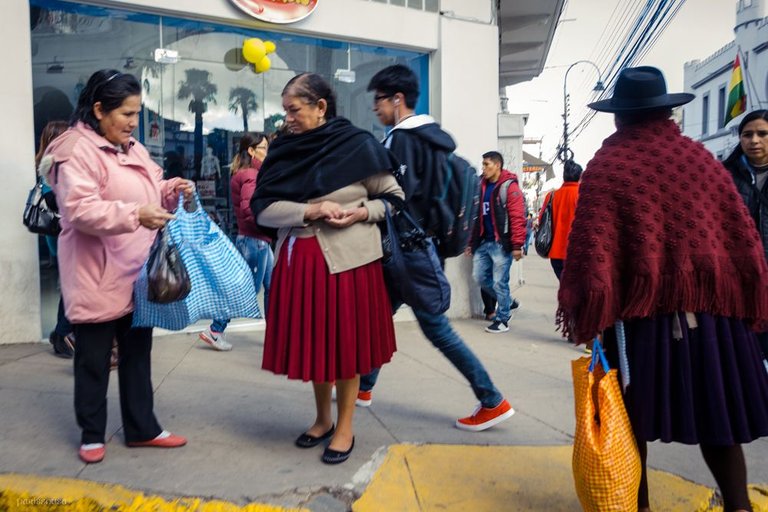
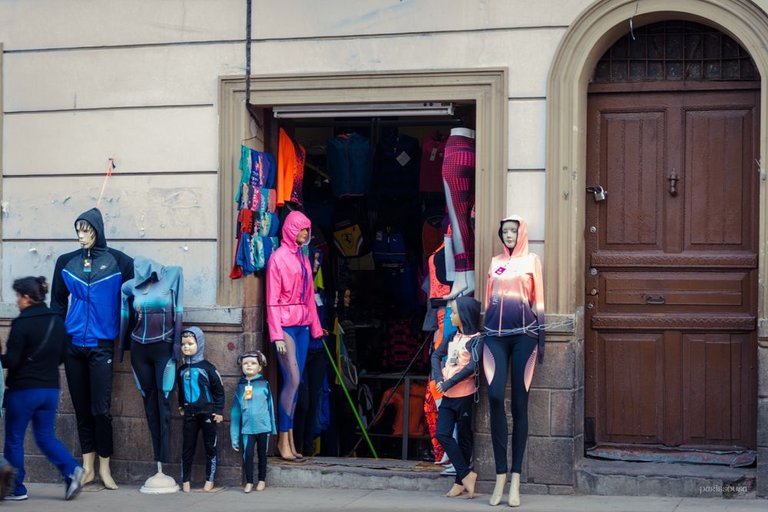
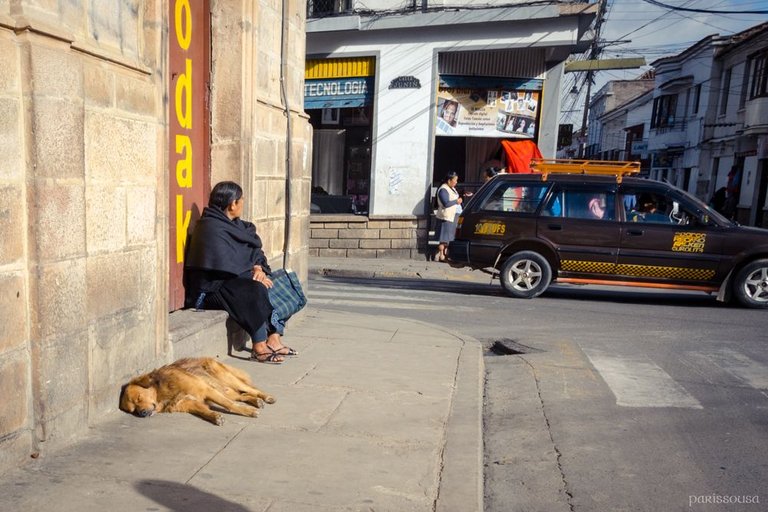
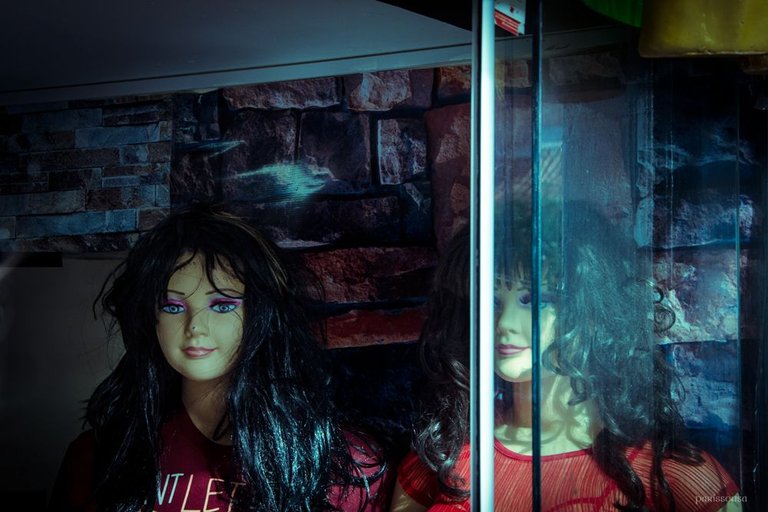
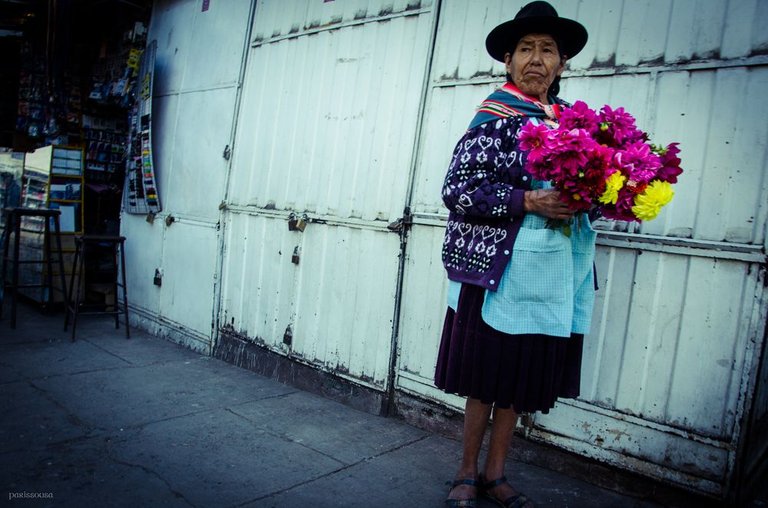
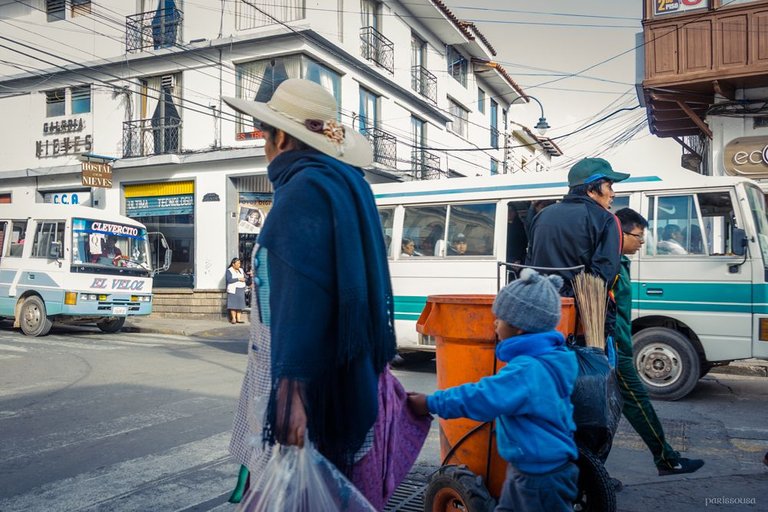

And finally I arrived at the market. There I found all kinds of people doing their selling. There are also places to eat, so we see women cooking typical meals, chatting with each other and smiling. Here they sell fruit, vegetables, bread, cakes and meat. The atmosphere is vibrant and welcoming, with the characteristic bustle of a local market.
Y por fin llegué al mercado. Allí me encontré con todo tipo de personas realizando sus tareas de venta. También hay locales para comer, así que vemos a las mujeres cocinando las comidas típicas, charlando entre ellas y sonriendo. Aquí venden frutas, verduras, pan, tortas y carne. La atmósfera es vibrante y acogedora, con el bullicio característico de un mercado local.

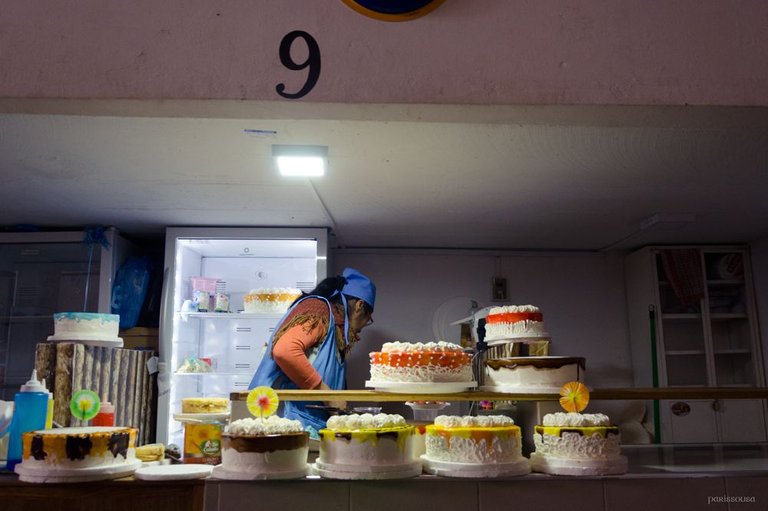
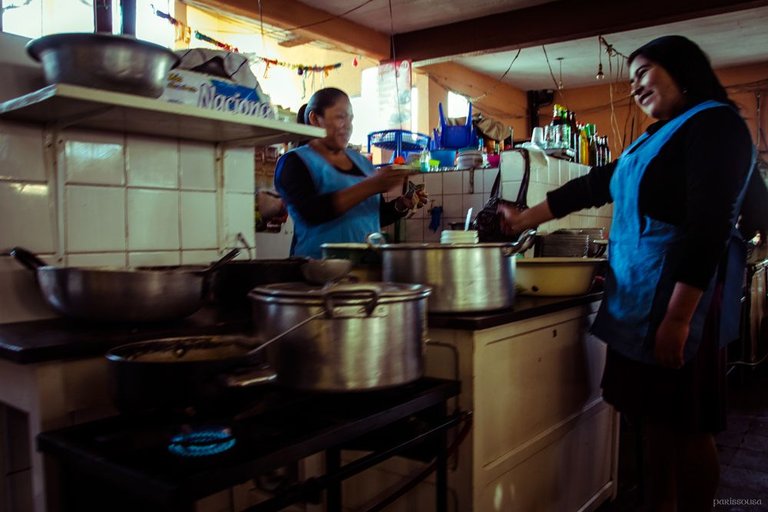
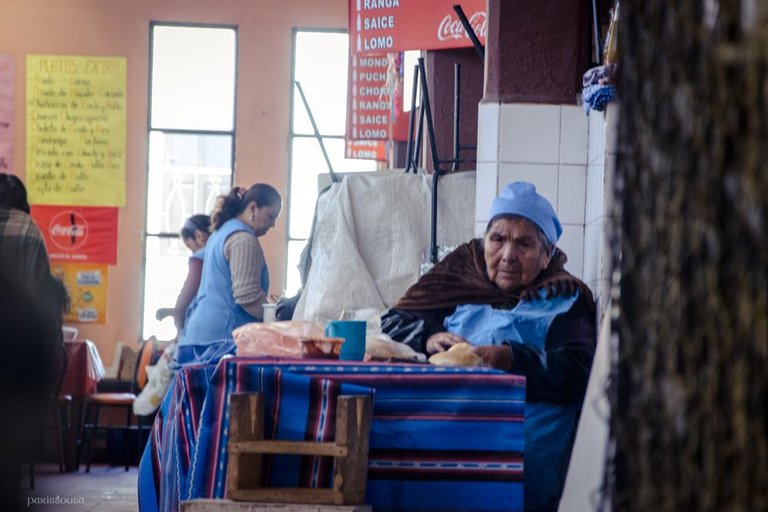
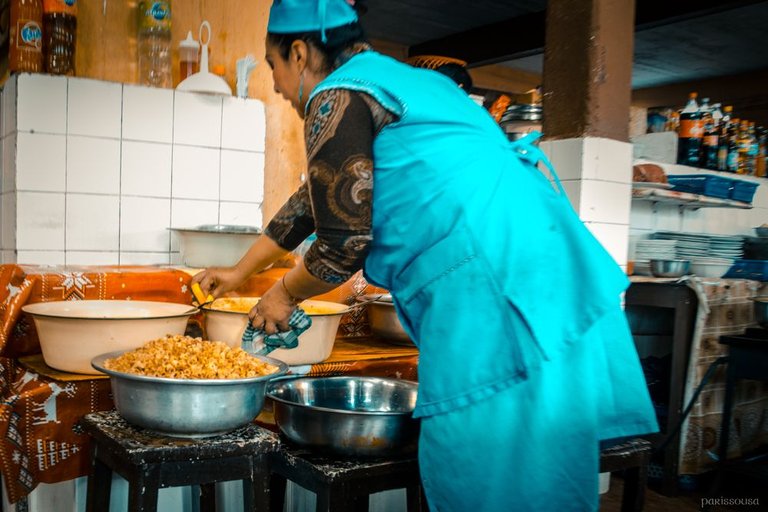
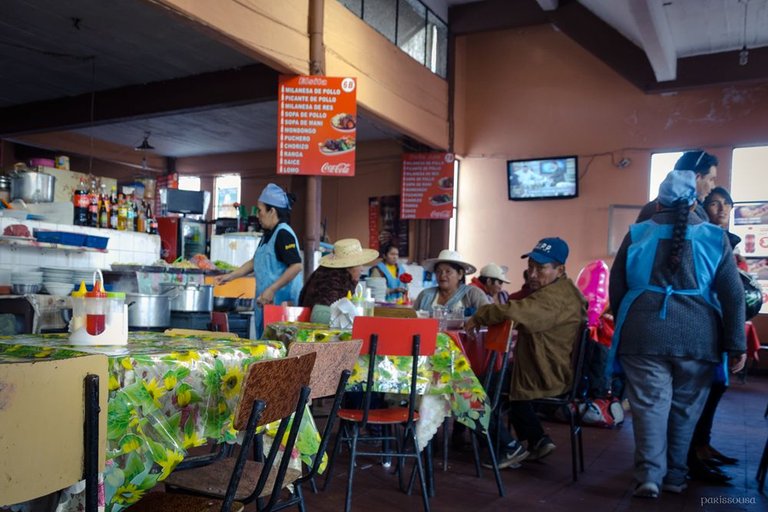
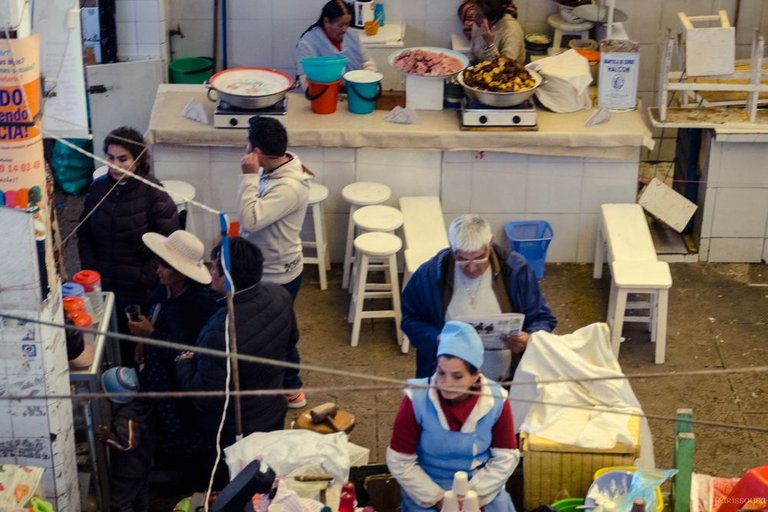


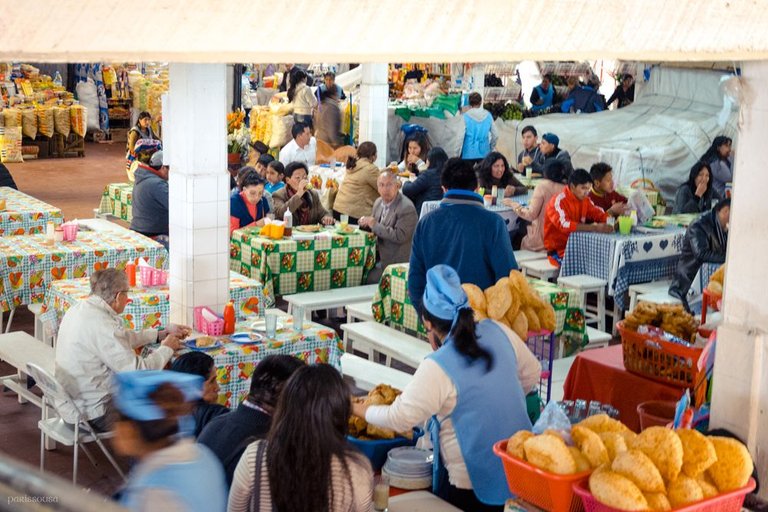
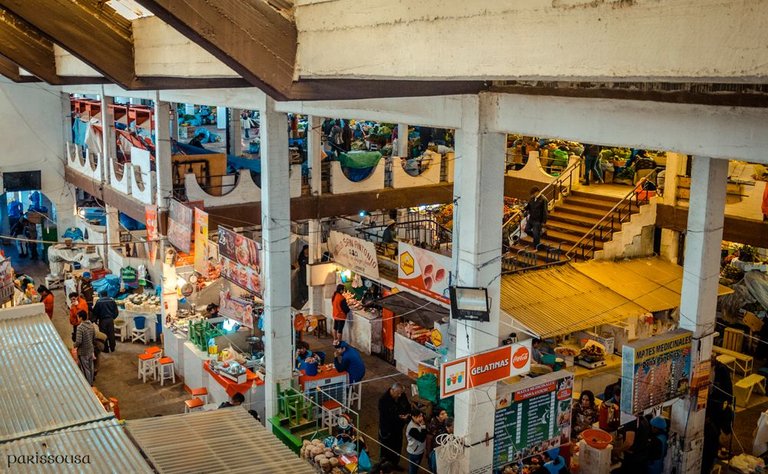
The way they display the merchandise is very striking; a jumble of vegetables and fruit, sometimes loose and sometimes in their bags. You can also see pigeons walking among the vegetables, which is very picturesque.
Es muy llamativo el modo en que exponen la mercadería; un revoltijo de verduras y frutas, a veces sueltas y otras en sus bolsas. También se pueden ver palomas caminando entre las verduras, lo cual es muy pintoresco.

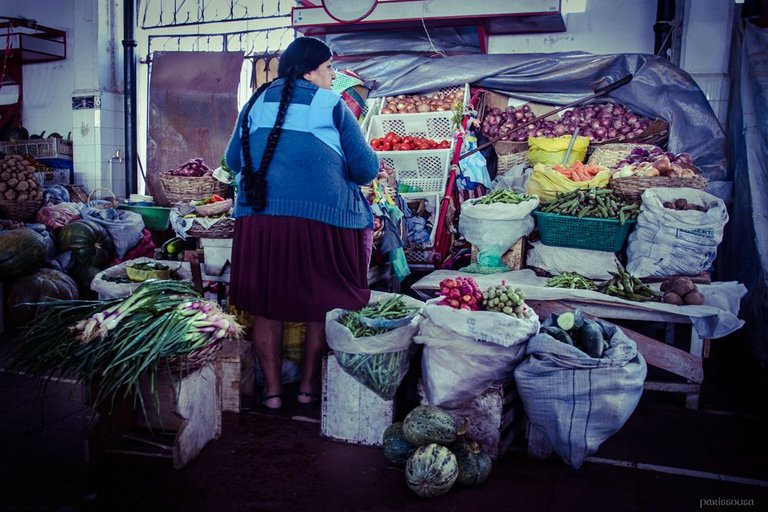
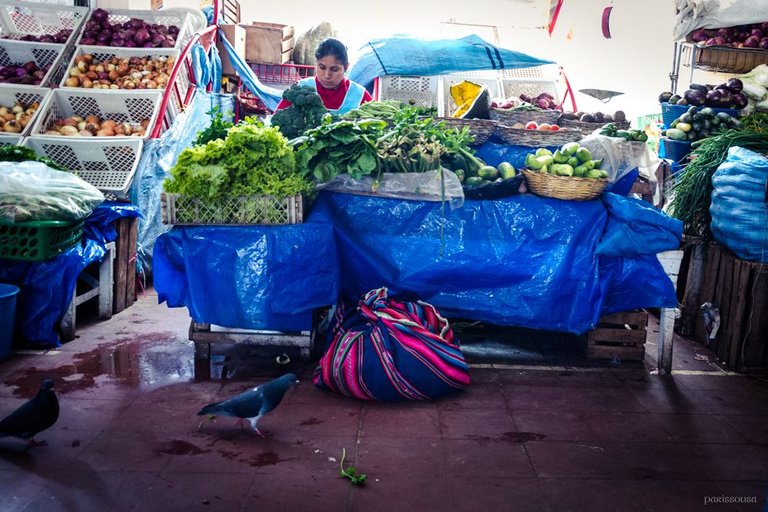
I was particularly struck by the sign on the meat stand. The sign read: "For hygiene reasons, do not touch the meat." This made me think that there are buyers who touch the meat, which surprised me quite a bit. The insistence on hygiene is understandable, but I find it curious that it was necessary to put up a sign at all.
Me llamó mucho la atención el cartel que se encontraba en el puesto de venta de carne. El cartel decía: "Por higiene, no tocar la carne". Esto me hizo pensar que hay compradores que tocan la carne, lo cual me sorprendió bastante. La insistencia en la higiene es comprensible, pero me resulta curioso que haya sido necesario colocar un cartel al respecto.
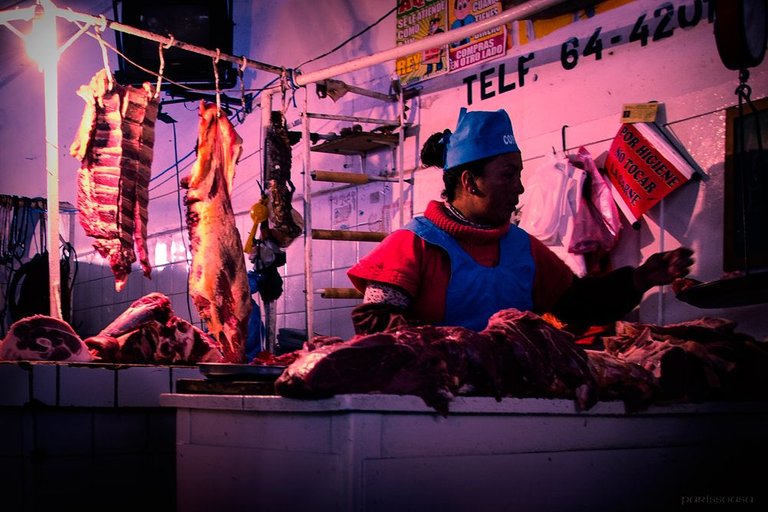
I continue to wander around the market, and find some stalls outside. The hustle and bustle continues there, with people walking, buying and selling. The atmosphere is full of energy.
Sigo paseando y recorriendo el mercado, y encuentro unos puestos en la parte exterior. Allí continúa el bullicio, con gente caminando, comprando y vendiendo. La atmósfera está llena de energía.

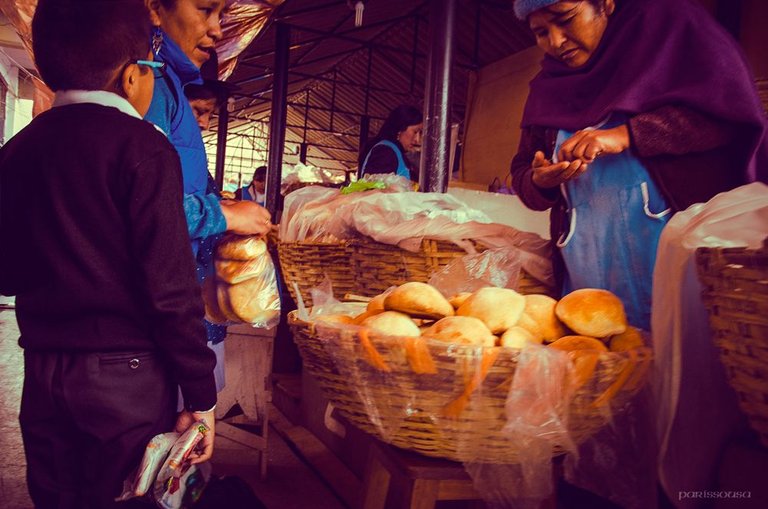
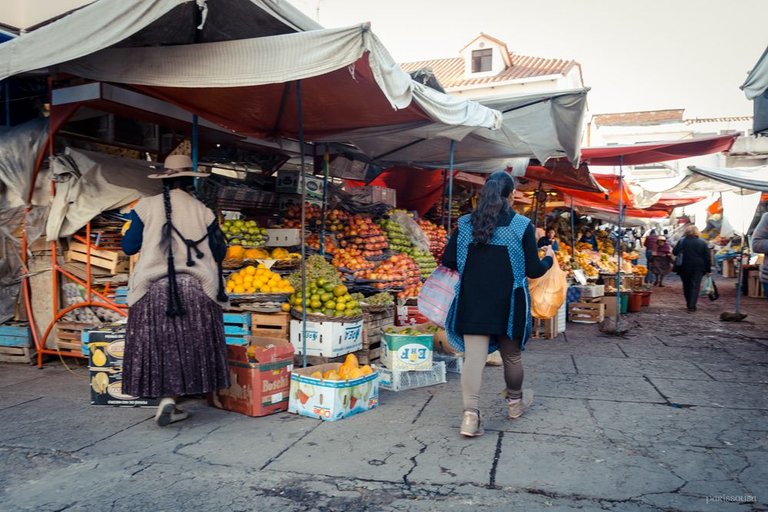
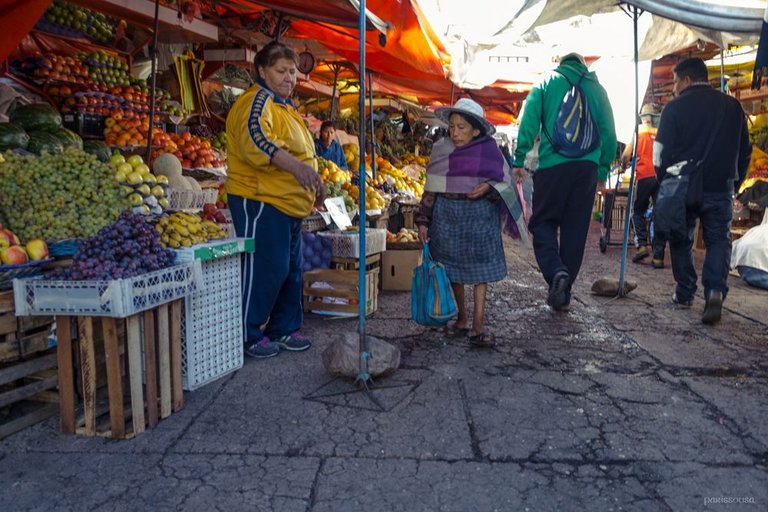
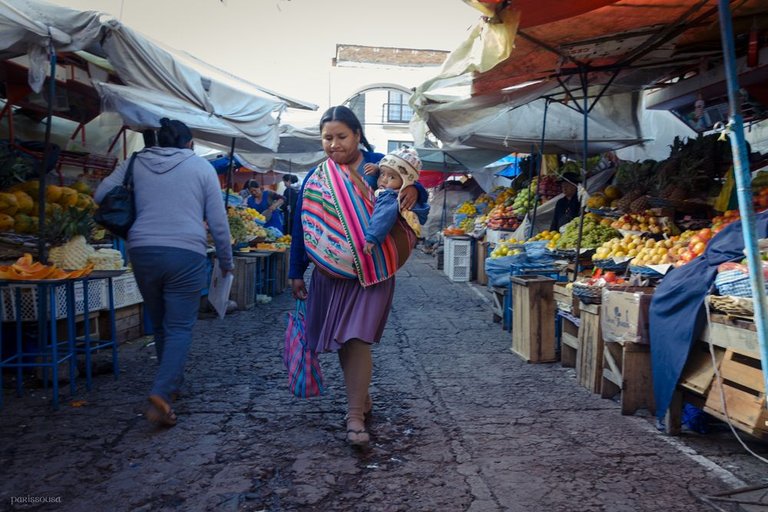
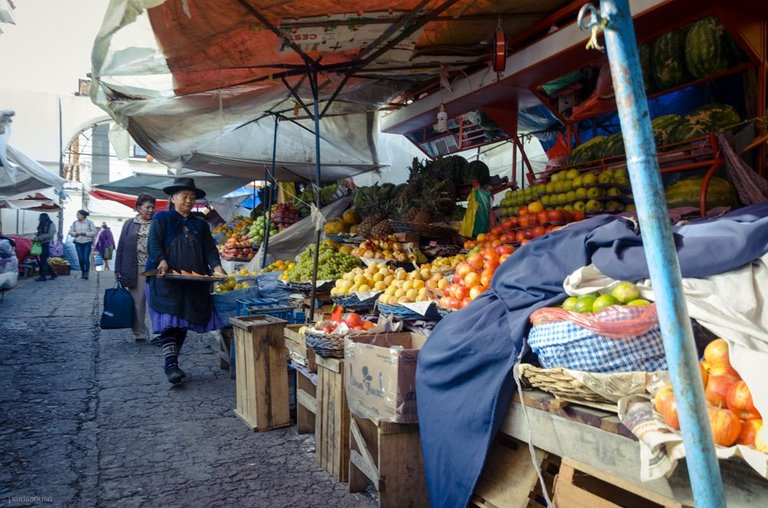
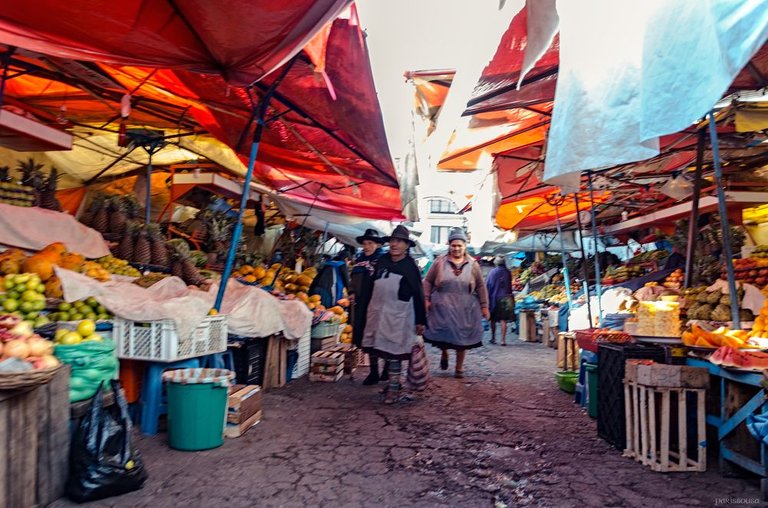


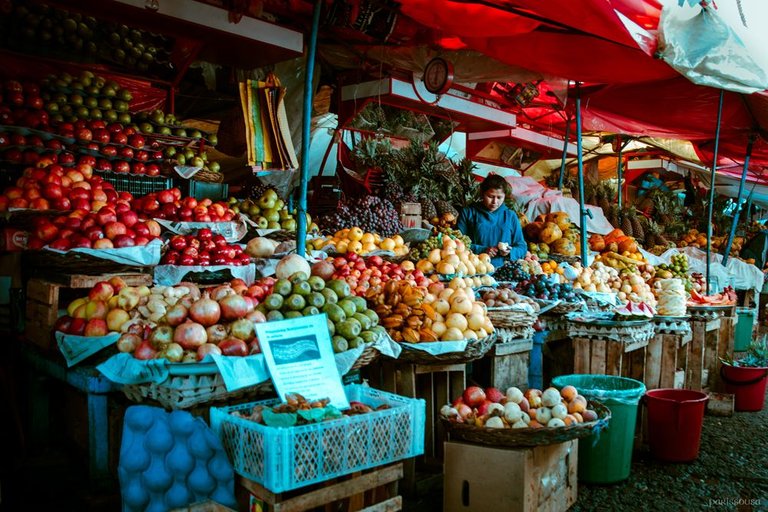
Once out on the street, I mingle with the passers-by and continue to find street vendors. The visual pollution of the tangled cables continues to draw my attention. I notice that the cables are tangled with the lamp posts and those traffic lights with such a unique design. This tangle of cables is part of the urban landscape and adds a unique character to the city. That is why I am interested in photographing them against the blue sky full of clouds.
Ya en la calle, me mezclo con los transeúntes y sigo encontrando puestos de venta callejera. La contaminación visual de los cables enredados sigue llamando mi atención. Noto que los cables están enredados con los postes de luz y esos semáforos de diseño tan particular. Esta maraña de cables, es parte del paisaje urbano y le añade un carácter único a la ciudad. Por eso me interesa fotografiarlos contra el cielo azul lleno de nubes.
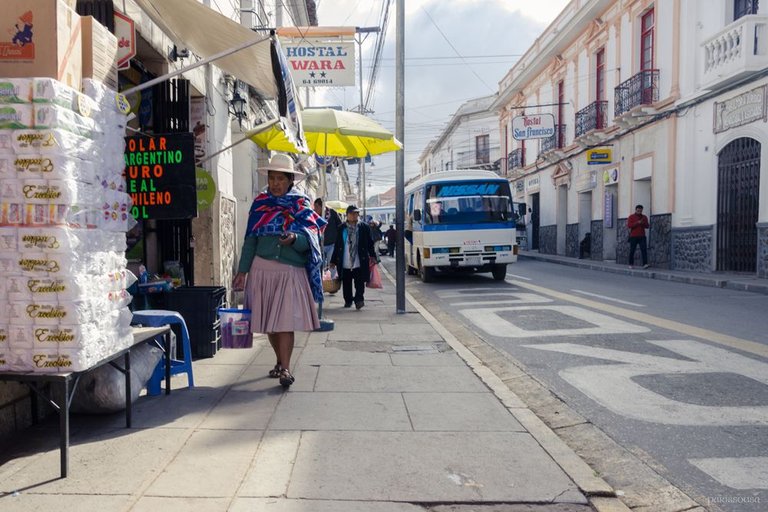
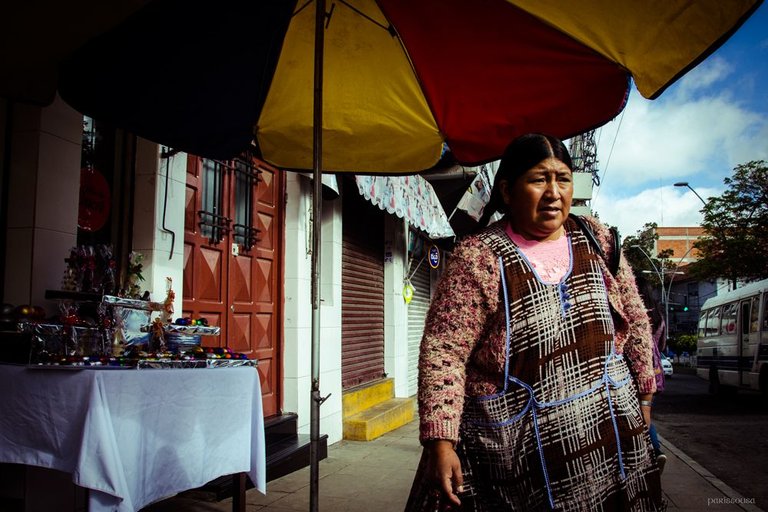
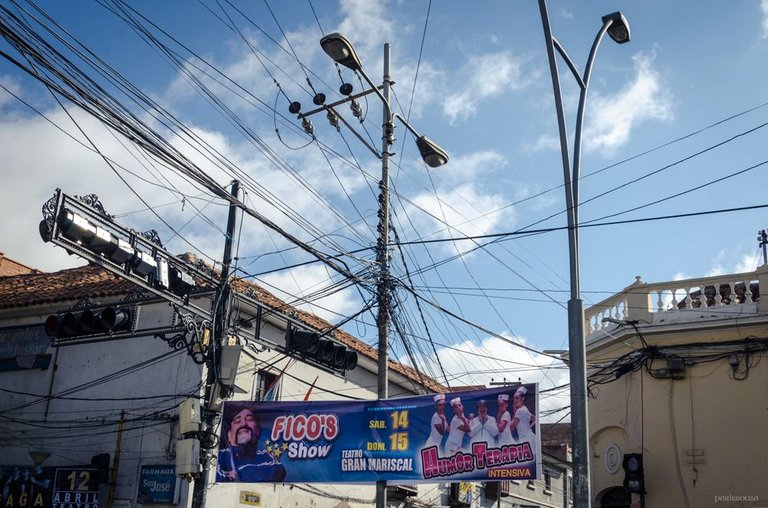
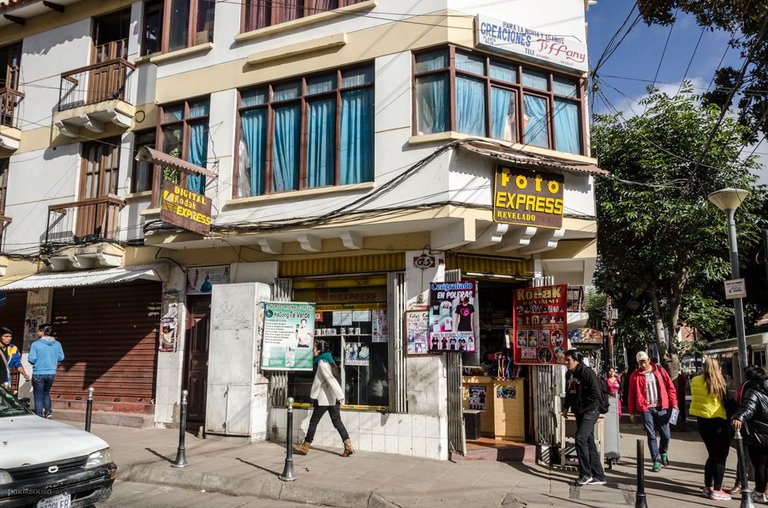
Another striking scene was seeing this young man shining shoes, a trade he thought had been lost.
Otra escena llamativa fue ver este joven lustrando los zapatos, un oficio que creía perdido.
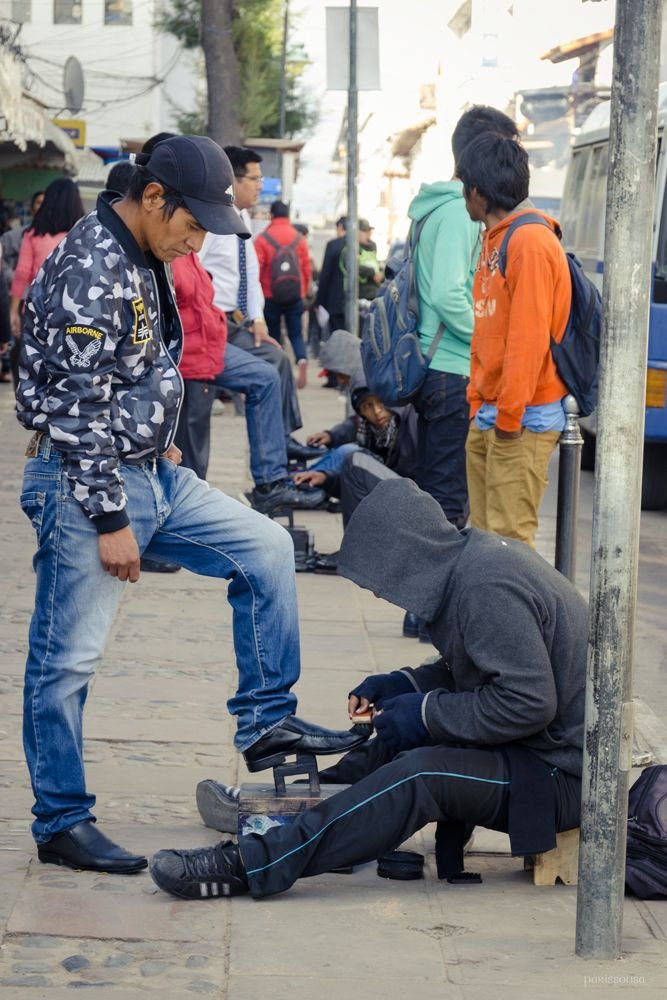
I continue to walk around Sucre and every corner surprises me. I find photographic scenes in every corner, and in one of them I was surprised by these nice mannequins tied with chains, as if they were capable of escaping and running away. The cables, always present, cross from one street to another, adding a peculiar touch to the urban landscape.
I enjoyed the trip very much, the people are very kind and calm. It is a pleasure to walk through its streets.
Sigo recorriendo Sucre y cada esquina me sorprende. Encuentro escenas fotográficas en cada rincón, y en una de ellas me sorprendieron estos simpáticos maniquíes amarrados con cadenas, como si fueran capaces de escapar y salir corriendo. Los cables, siempre presentes, cruzan de una calle a otra, añadiendo un toque peculiar al paisaje urbano.
Disfruté mucho del viaje, la gente es muy amable y tranquila. Da placer caminar por sus calles.
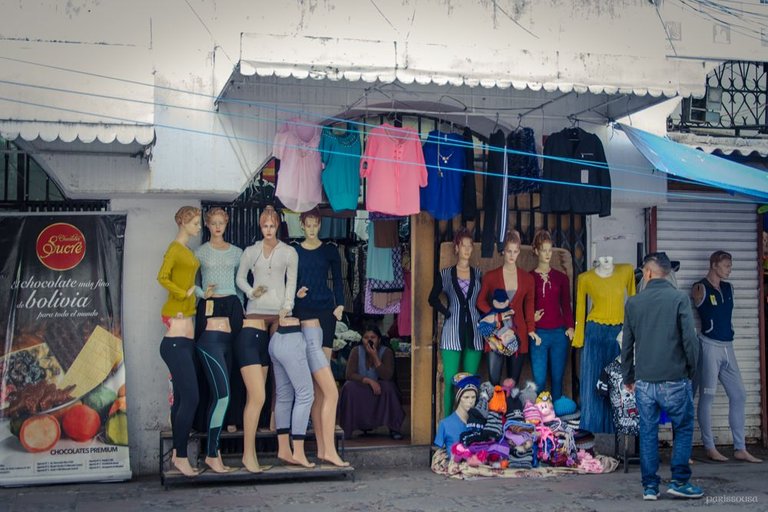
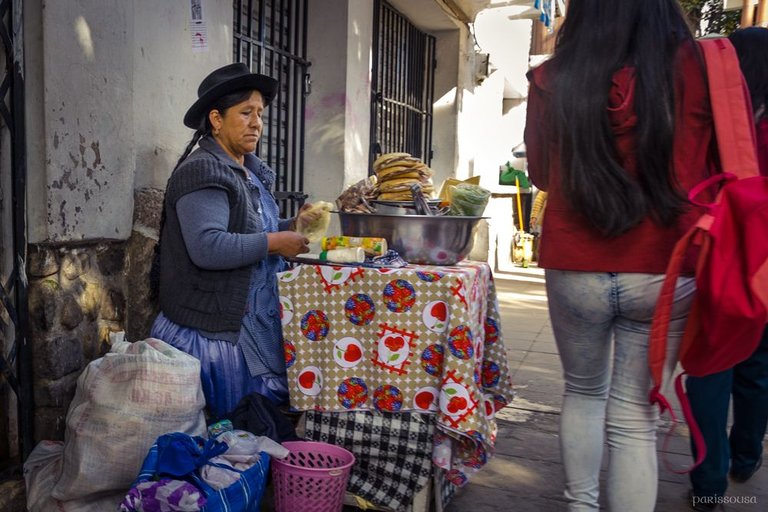
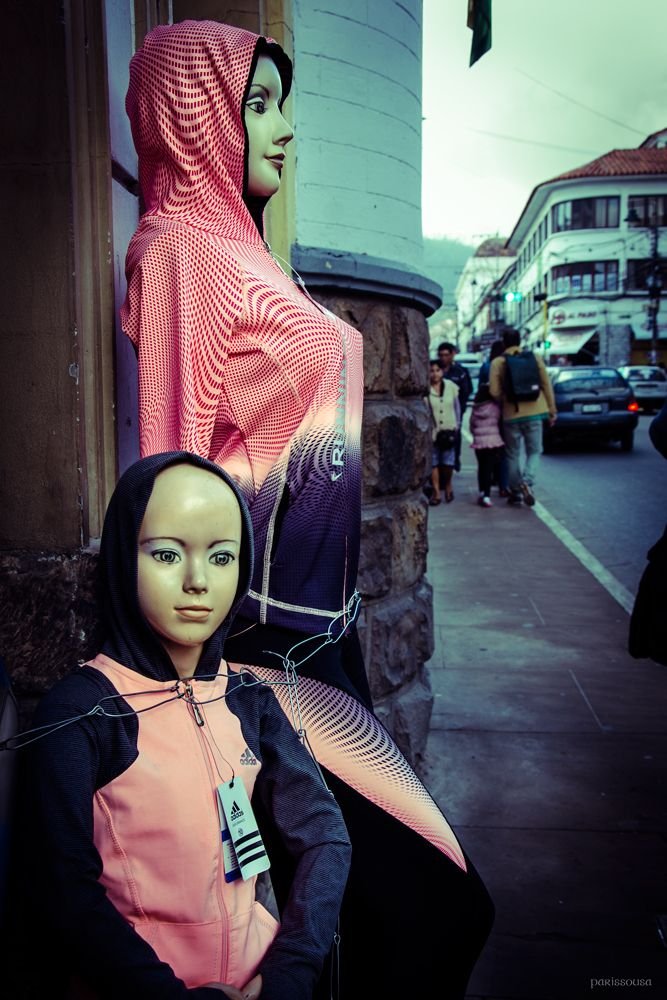
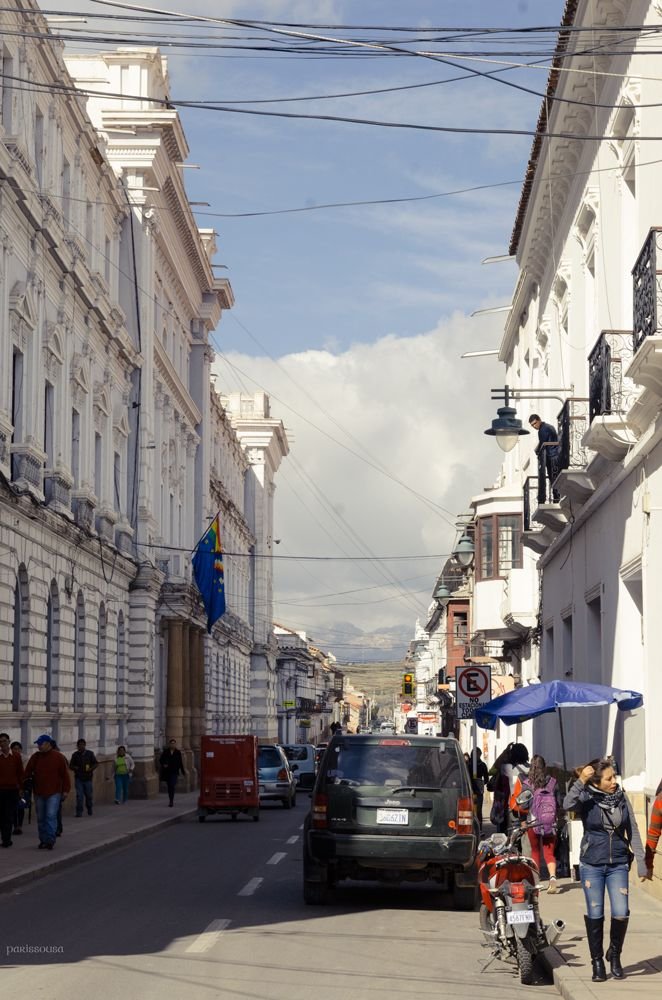
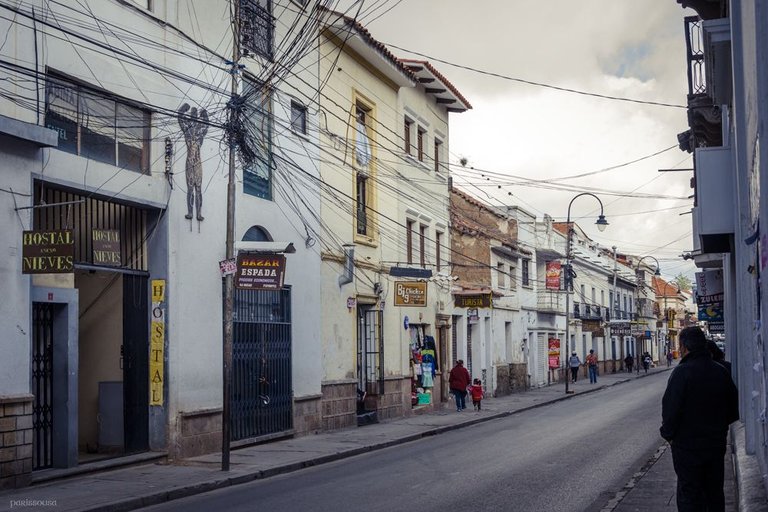
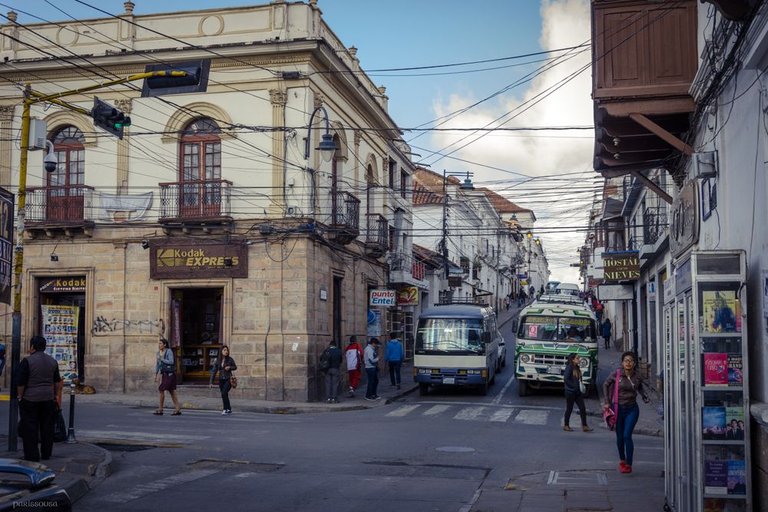
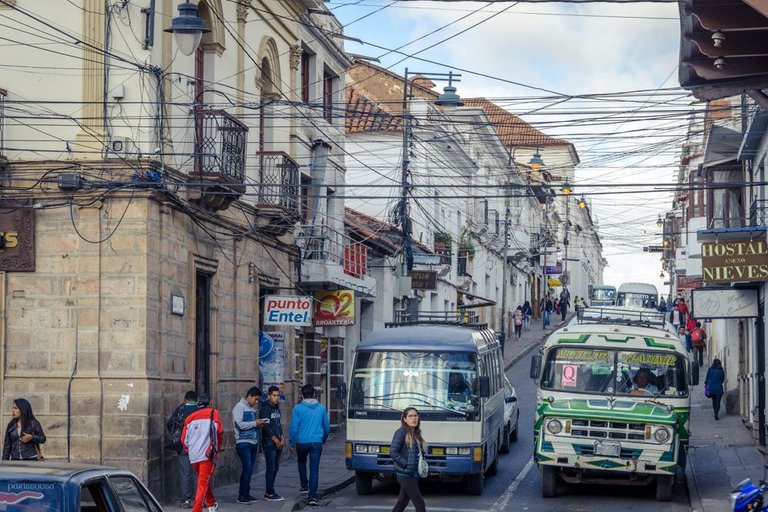
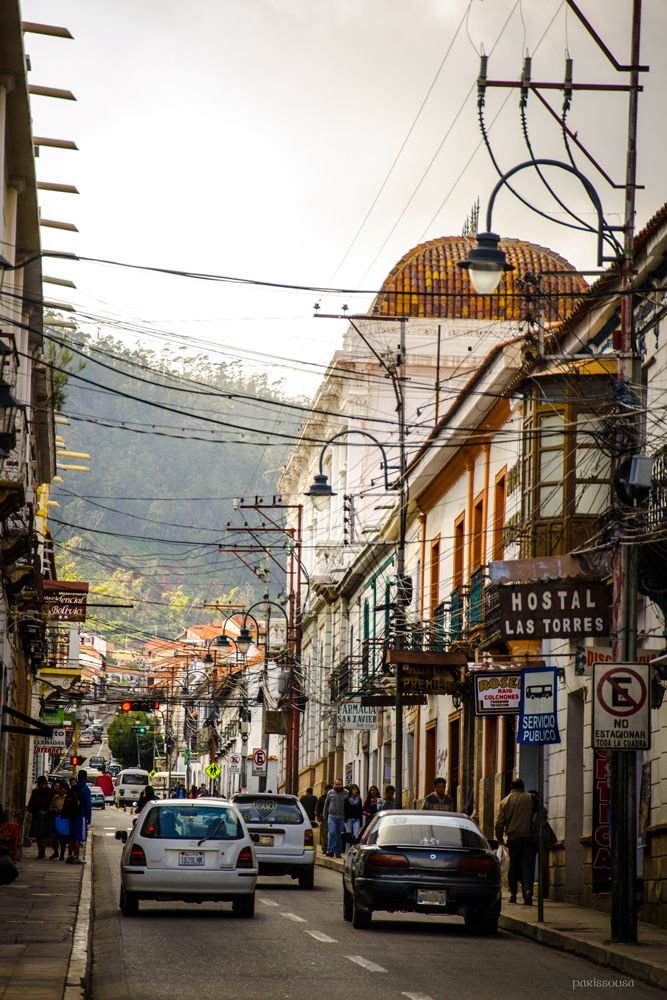
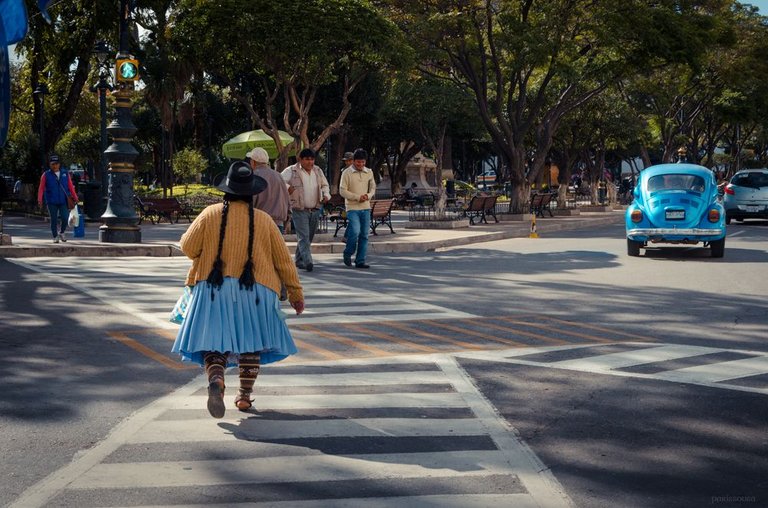
Near the end of my walk, I came across two dinosaurs crossing the street. I couldn't resist taking a photo of them, they were so funny! I don't know where they came from or where they were going, but it will remain a funny unsolved mystery. These unexpected encounters add a touch of magic to street photography.
Ya casi al final de mi paseo, me encontré con dos dinosaurios cruzando la calle. No pude resistir la tentación de tomarles una foto, ¡me resultaron muy graciosos! No sé de dónde salieron ni hacia dónde se dirigían, pero quedará como un gracioso misterio sin resolver. Estos inesperados encuentros añaden un toque de magia a la fotografía callejera.
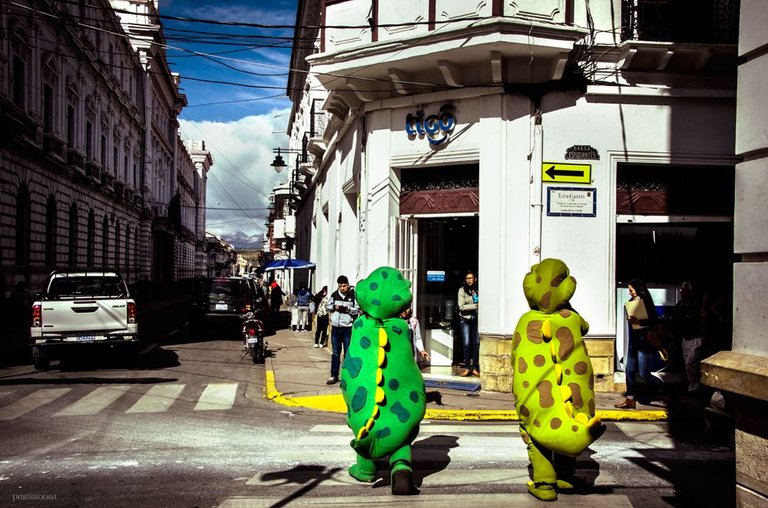
With this last photo I say goodbye until the next photographic adventure, and I leave the link to my social networks. See you soon!
Con esta última foto me despido hasta la próxima aventura fotográfica, y dejo el link de mis redes sociales. Hasta pronto!
https://www.facebook.com/photo/?fbid=3838528113125467&set=pcb.3838528509792094


[//]:# ([//]:# (!worldmappin -19.04503 lat -65.25928 long d3scr))
Hiya, @ybanezkim26 here, just swinging by to let you know that this post made it into our Honorable Mentions in Travel Digest #2444.
Your post has been manually curated by the @worldmappin team. If you like what we're doing, please drop by to check out all the rest of today's great posts and consider supporting other authors like yourself and us so we can keep the project going!
Become part of our travel community:
You can check out this post and your own profile on the map. Be part of the Worldmappin Community and join our Discord Channel to get in touch with other travelers, ask questions or just be updated on our latest features.
¡Excelente reportaje fotográfico! Creo que logra transmitir muy bien la vibra del lugar. Saludos 😉
Thank you for your words!
Thank you!
Hermosas fotos que reflejan la dinámica de la ciudad, de casualidad el nombre Sucre, está relacionado con el prócer Antonio José de Sucre?
Saludos!
Si, el nombre de la ciudad es en honor al prócer. Gracias por tus comentarios!